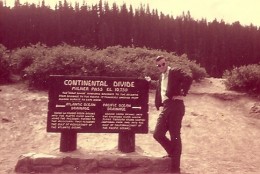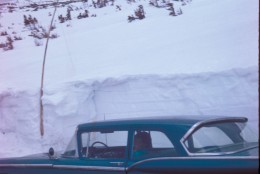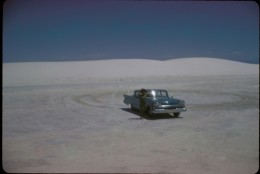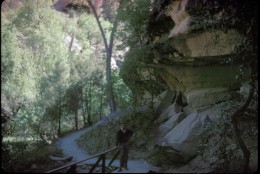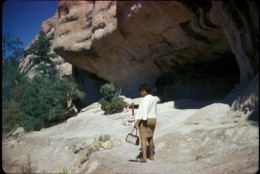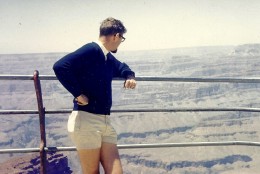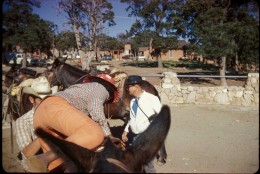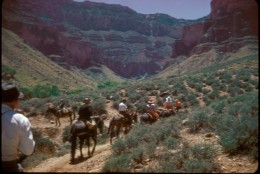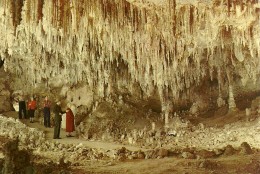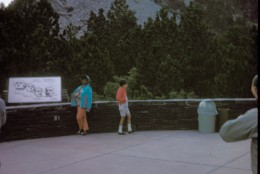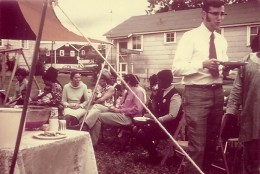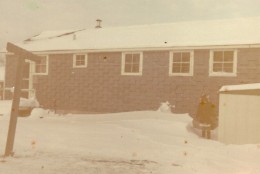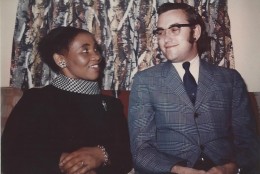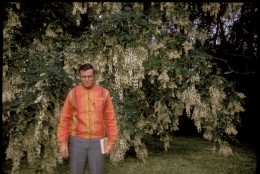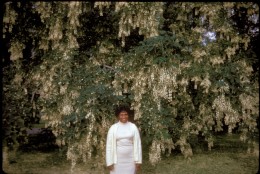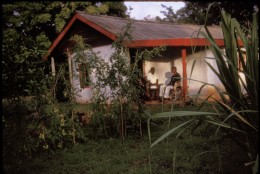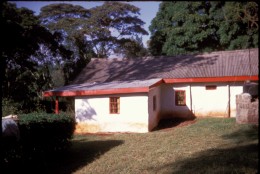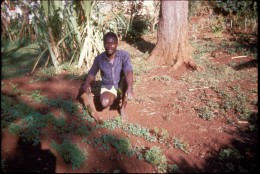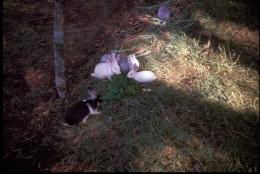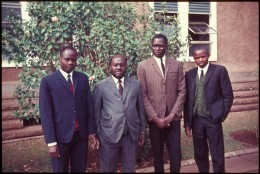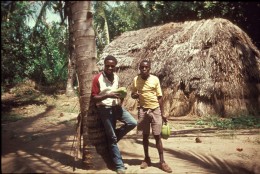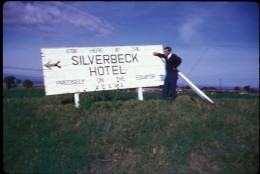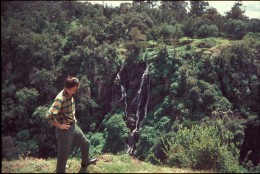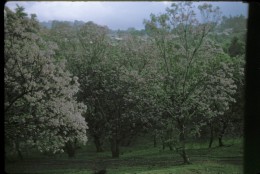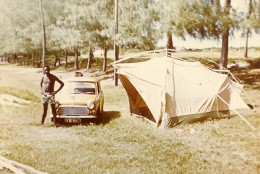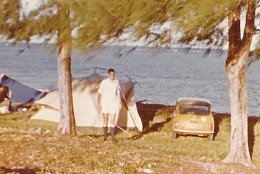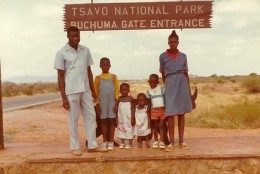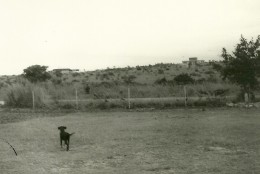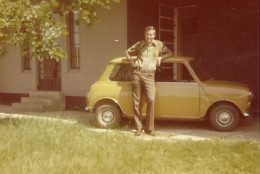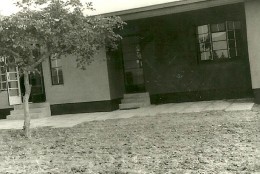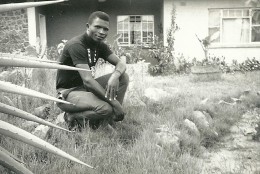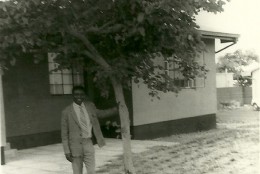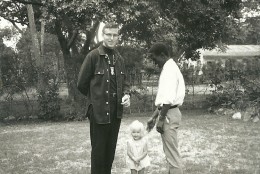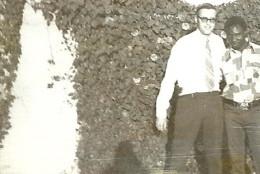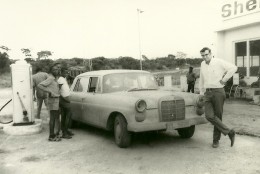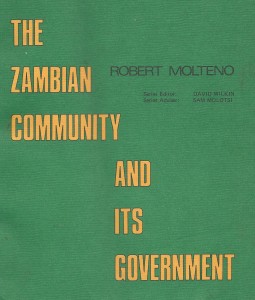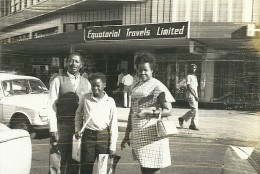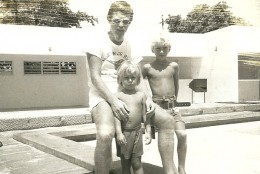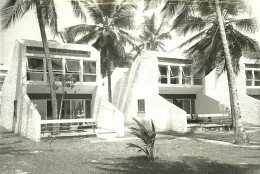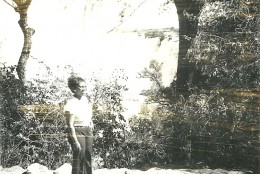Living in three places — Syracuse University, Kenya & Lusaka: 1968-75
Travel, resettlement in America, and then starting my Ph.D.
Exciting but tiresome. Getting back to America proved to be an exciting but also tiresome experience. Probably more exciting for Zindi and more tiresome for me! Zindi had no travel documents as apartheid South Africa regarded her as an African National Congress (ANC) supporter and possibly a “terrorist.” Conversely, based on our marriage documents and her being a refugee from South Africa, America quite readily provided her with entry documents. These documents did not, however, permit her to even leave the London airport when we passed through the U.K.. A friend had to meet me at the airport. A day later, my family (Dad, Dan and Jan) met us in NYC and drove us to Ohio during the next week.
Travel westward through the Rocky Mountains and the southwest (April and May 1968). We had several months before I was to enroll in Syracuse in mid-June. This allowed us some time for travel. We planned a trip westwards to areas that I had ever seen before. My father dealt in used cars and for $100 bought us a used blue Chevy. Zindi was quite impressed this big American car as shown in pictures below. It served us well for several years. Within a fortnight of our arrival in Ohio, we started driving west.
We drove straight across the Great Plains to Colorado and into the Rocky Mountains. (Unfortunately, most of our pictures of the beautiful parks were damaged or lost, including ones of Old Faithful erupting.) From Yellowstone Park, we turned south across New Mexico and Arizona to Zion National Park and other parks. We took mules down to the bottom of the Grand Canyon. (Although Zindi was not pleased with the photo, we laughed about her struggling to get on her mule at the start of the descent.) From Arizona and Utah, we turned north reaching the Dakotas where we saw Mount Rushmore, Devil’s Peak and other places.
Mountains, deserts, and Pueblo Indian caves
- Continental Divide
- Above the snow line in May
- Our Chevy above the snow line
- Desert in New Mexico
- Pueblo caves
- Pueblo caves
Grand Canyon
- Looking down at the Grand Canyon
- Zindi getting on her mule
- Descending into the canyon
Other photos of the trip in 1968
- Carlsbad Cave
- Mount Rushmore
- Devil’s Peak
Syracuse University and their Ph.D. Program in East African Studies
After our trip to the West Coast, we immediately headed to Syracuse, New York. In the summer of 1968, we moved into married students’ housing, which at that time still meant basic, post World War II emergency housing.
- Married housing: summer party
- Zindi and me in our living room
- Winter was very cold!
Syracuse University’s Program of East African Studies (PEAS). While teaching in Cleveland, Ohio, I finished my M.A. in September 1962 and then started a Ph.D. program at Case-Western Reserve University. While my greatest desire was to complete a Ph.D. in History, I did not want to continue at CWR. PEAS looked more interesting and relevant with my new interests in Zambia. Also, they accepted me before I left Africa. Thus, I took up residence and started my Ph.D. program. My work in the NWP from 1963-1968, certainly provided me with a good background. Meanwhile, Zindi started work as an R.N. at a hospital next to the campus.
Syracuse University in pictures: 1968-1970
- At Syracuse
- PEAS in the 1960s and 1970s
- Gardens near the main campus
- Zindi enjoying spring at SU
- Dan, my brother and Zindi probably in 1970
In addition to my academic classes, I had to take proficiency tests in two languages or their equivalent. Consequently, I spent the summer of 1969 at Cornell University learning Portuguese. I passed, but just barely. The next summer (1970), Zindi took time off from work and traveled with me to Denver, Colorado. In lieu of my second language, I took the option of taking archival classes and become a certified Archivist. (In this case by the State of Colorado.) Immediately following my studies in Colorado, two things immediately happened. One, I sat my oral examinations for my Ph.D. and passed, becoming Ph.D. A.B.D. (“all but dissertation”). Two, I left Zindi in Syracuse (as she was trying to get both her citizenship and final certification as an R.N.) and went to Nairobi.
Back to Africa: Nairobi (1970)
Kenya National Archives (KNA). Syracuse’s graduate program in African History had been developed In the mid- and late 1960s. One project developed by Dr. Robert Gregory was to microfilm old materials in the Kenya National Archives (KNA). The hope was to protect this valuable archival material. A copy of the microfilm would be stored at Syracuse.
Academic papers. At S.U. before leaving for Kenya, I researched and wrote two academic papers on the northern regions of Kenya. After settling in Nairobi, I spent a lot of time traveling to and studying about the remote northern regions of Kenya, the Northern Frontier District (NFD) . I would eventually publish one paper in the journal of African Affairs in 1979 about the Ethiopian refugees that flooded into the Northern Frontier District (NFD) of Kenya during the Italian invasion and conquest of Ethiopia: “Refugees and British Administrative Policy in Northern Kenya, 1936-1938.” Direct Link: African Affairs
Each year, teams of two graduate students were sent to the archives in Nairobi to facilitate the microfilming. In theory this microfilm project was part-time but in practice was far more demanding. Thus, finding time for basic research for my Ph.D. was hard.
In hindsight, Syracuse’s focus on Kenya and East Africa distracted me from my own basic interest in Zambia and the North-Western Province by at least two years. More positively, my travels to and studies about the NFD gave me a better comparative understanding of why peripheral regions of British African territories remained the most underdeveloped, in this case Kenya and Zambia.
Despite the hard work and enormous frustrations, I spent many happy moments in Kenya. The pictures below show my very modest (but charming) home in Nairobi, trips to the Great Rift Valley, Mombasa, upcountry and standing on the equator.
- My small Nairobi cottage
- Friends on the front porch
- Cottage from the rear
- Josh Lihanda (caretaker) and my garden
- My rabbits
- Kenya National Archives staff
- Great Rift Valley behind us
- Jack Roelker at the Great Rift Valley
- Outside Mombasa: Shadrack Chengo (left)
- On the Equator but cold because of altitude
- Gorgeous waterfall right on the equator
- One of Kenya’s wonderful views
The pictures below show me camping on the Coast near Mombasa with Shadrack and also a picture of Harrykin Bwanga Ombunga and his family.
- Camping on the ocean w/Shad
- Overlooking the ocean
- Harrykin and Family in early 70s
In December 1970 and early January 1971, I took a three week holiday (vacation) to return to Zambia and reflect on my life in Africa, both the NWP of Zambia and then Kenya. My four page chronicle of this trip back to the NWP was added 12th May 2018 from my old letters to family. Click here to read it: XMAS 1970-71 Journey back to the NWP
While passing through Lusaka to visit the NWP, I learned of an opening at the University of Zambia (UNZA) in the Education Department as a lecturer in Civics and History Methodology. After returning to Nairobi, I applied for this position whilst winding down my work at the Archives.
Back to Zambia (1971) again
Lusaka and the University of Zambia (UNZA): Overworked, frustrated, but happy.
In mid-1971, as I was completing my work in Kenya, I received an appointment to UNZA to be a lecturer in the School of Education teaching History and Civics Methodology. After a short visit to the USA, especially Syracuse and Ohio, I took up my new job in October. I immediately bought a new Morris Mini that looked almost identical to the one I had had in the NWP from 1963-1965! The university provided me with a brand new home several kilometers from the main campus on a hill that overlooked the new national Parliament. I acquired a puppy and called him “Kawa,” which was Luvale for “dog”. (When he became full grown, my heart broke when he jumped over my two metre high fence and was killed by a car. I resolved never to own a pet again.)
Chaotic Lusaka and my open door
In these years at UNZA, I felt well cared for and loved everything — despite being overworked — except for the chaotic city of Lusaka itself. It constantly made me miss the NWP’s rural charm or the more-organized American cities. (I had not yet become a resident of New York City, which I now love very much.) In Lusaka, I maintained an open door for former students and friends.
New home in Roma Park (Lusaka):
an open door for friends from the NWP and Nairobi
- Overlooking Parliament
- My new Morris Mini
- Front porch
- Front with Kawa, my last dog
- Henry Alphonso Lombo, former ZSS student
- Stanley Kamboyo, former ZSS student
- Benjamin Chiyangi, former ZSS student
- Front of house with Shadrack Chengo
- Driving Dr. Bwanausi’s car through Solwezi to Sakeji School in Mwinilunga w/his children
UNZA
I became deeply pre-occupied in my teaching duties, both at UNZA’s main campus and also helping at Kabwe Teaching College. I also got deeply involved in writing Civics textbooks for secondary school students throughout the country. Robert Molteno was the main writer; I was the main editor, and Sam Molotsi was the government liaison at the Ministry of Education’s Headquarters.
Front cover: The Zambian Community and its Government
Other tasks at UNZA included an UNZA teaching experiment at Matero Boys Secondary School, which was well received. Conversely, I got involved in UNZA’s “Tracer Project” of secondary school leavers throughout the country and tried, with Thomas Samungole’s help, to apply it to the NWP. My weak knowledge of statistics, however, resulted in this being a colossal failure. (The raw documents, with Thomas Samungole’s help, were send to UNZA’s Special Collections several years ago.)
An amazing drive in my Morris Mini from Zambia to Kenya and back in Nov. 1972
On a three week UNZA holiday, I drove my Morris Mini north across Tanzania to Nairobi and Mombasa. I saw Shad and the Zambodla family in Nairobi and Fred Morton and his family near Mombasa.
- Zambodla family, 1972
- Fred Morton w/Barry and Ty, 1972
- Fred’s chalets overlooking ocean
Zindi and Mteto (Enoch)
Zindi rejoined me in Lusaka near the end of 1971 after getting her American citizenship. She started working for Dr. Harry Bwanausi who by now had his own private medical practice in Lusaka. She was quickly surrounded by multiple friends, especially from her South African homeland, who were refugees exiled from apartheid South Africa. Still, like me, she did not enjoy living in Lusaka.
Mteto Gqomo. Zindi’s brother, an African National Congress (ANC) leader, had gone into exile from South Africa in the early 1960s. He had quietly crossed the border into Botswana and slowly and very painstakingly (with two comrades) walked north across Zimbabwe, Zambia and Tanzania to Dar es Salaam over the course of a year. Everywhere, the colonial and South African police were but a step behind. In Dar he rejoined the ANC, who sent him to Yugoslavia to study for five years. After he returned to Tanzania, with an electrical engineering degree, he joined the national electrical company in Dar es Salaam. He and Zindi had not met in the intervening years.
A beautiful but very strange experience meeting Mteto in Dar es Salaam! On my drive to Nairobi, I visited Mteto in Dar in December 1970. It was a weird experience for both: brothers-in-law meeting without the intervening relative that connected them. We did not even have photographs of each other. I questioned him carefully to make sure I was not meeting a fake South African spy and I am sure that he did the same. We quickly hit it off well and he certainly became, and remains, the greatest hero in my life. (As noted later, he died in Harlem, New York in October 2006.)
A joyous reunion in Lusaka for Mteto and Zindi. I cannot describe the joyous family reunion when Mteto came to Lusaka and met Zindi and I in 1972. He could stay only a few weeks but we all had a wonderful time. The reunion was tempered, however, with the knowledge that apartheid still ruled the land in South Africa. He and Zindi remained very careful about contacting relatives in Port Elizabeth, who were still being harassed, often because of them. The South African police were not so concerned about Zindi but wanted Mteto. (Unfortunately I have only several grainy photographs of Zindi and Mteto in this period as shown below.)
Zindi and Mteto in Lusaka: 1972
- Zindi & Mteto’s reunion in Lusaka
- Zindi w/Kawa
- Zindi visiting Victoria Falls
Click on the following link to proceed to the next webpage about my life in the NWP with UNZA from 1975-1979
UNZA in the NWP: 1975-1979


